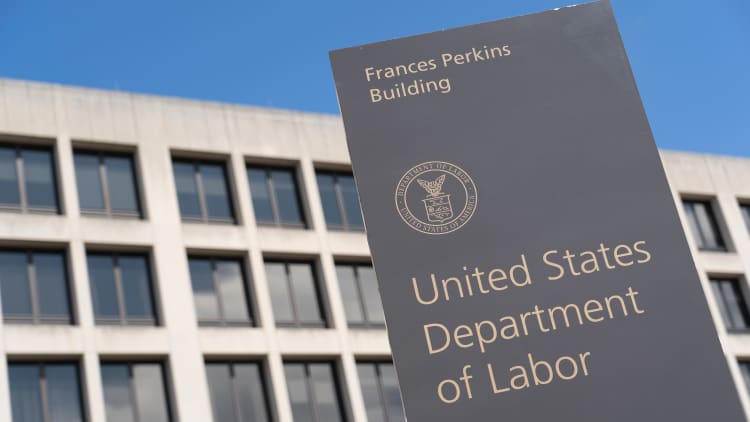
First-time filings for unemployment insurance hit 3.84 million last week as the wave of economic pain continues, though the worst appears to be in the past, according to Labor Department figures Thursday.
Economists surveyed by Dow Jones had been looking for 3.5 million.
Jobless claims for the week ended April 25 came in at the lowest level since March 21 but bring the rolling six-week total to 30.3 million as part of the worst employment crisis in U.S. history. Claims hit a record 6.87 million for the week of March 28 and have declined each week since then.
Last week's initially reported figure was revised up by 15,000 to 4.4 million, meaning that the most recent total is a decrease of 603,000.
Continuing claims rose to just shy of 18 million, a rise of 2.2 million from the previous week.
The four-week moving average, which smooths volatility, jumped to 13.3 million, an increase of 3.7 million from the previous week's average.
The surge in unemployment has come amid efforts to contain the coronavirus spread. While some states and municipalities have begun bringing their respective economies back online, much of the key U.S. infrastructure remains on lockdown.

Filings continue at a high pace as the government has expanded the list of those eligible for benefits and amid continued difficulties at state offices for claims filers. The Economic Policy Institute earlier this week estimated that the current claims level probably undercounts by as much as 12 million those who are eligible for benefits but not getting them due to the inability to file or other roadblocks.
The state of Washington showed the biggest gains for the week, with a rise of 62,282, a 75% increase from a week ago, according to unadjusted figures. By contrast, California see a decline of more than 200,000 and Pennsylvania was down by 63,312.
Troubles in the labor market are reflective of a larger slump in economic activity that only recently has been reflected in data. Gross domestic product contracted 4.8% in the first quarter, according to a government report Wednesday that is expected to look much worse when the final revisions are in and only begins to show how much damage has been done.
Economists not only expect the Q1 number to end up sharply lower but predict a second-quarter decline worse than anything the U.S. has ever seen.
The most recent claims data comes ahead of next week's nonfarm payrolls report for April. Federal Reserve Chairman Jerome Powell said Wednesday that the unemployment rate is likely to rise above 10% from the March level of 4.4% which counted a period before the intense social distancing policies went into effect.
Nonfarm payrolls for April are expected to show a decline of 2.25 million, with an unemployment rate of 15.1%, according to preliminary estimates from FactSet.


